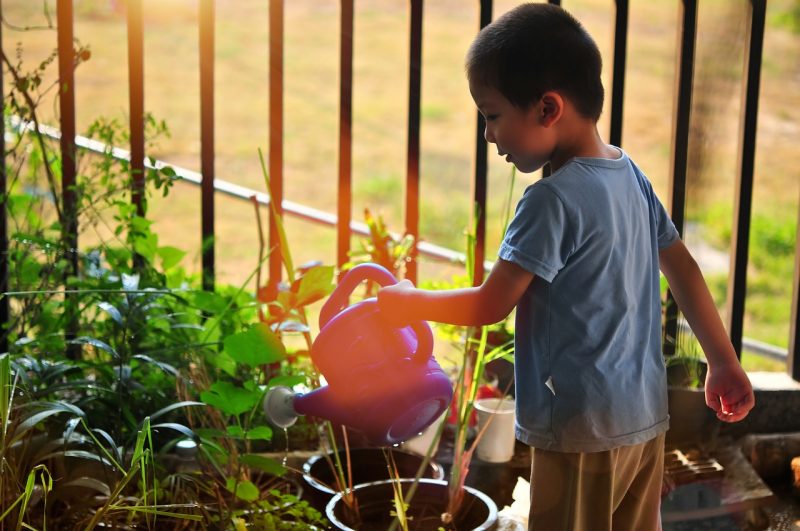
Having a garden at school might influence whether vegetables are available to children at home, a forthcoming study in Preventive Medicine finds.
Home fruit and vegetable availability is a strong determinant of how much people eat them, and fruit and vegetable consumption in turn is associated with a number of improved health outcomes, including reduced risk of developing certain types of cancer and cardiovascular disease. But research finds kids don’t eat nearly enough fruits and vegetables. Between 2007 and 2010, 93 percent of kids didn’t meet the U.S. Department of Agriculture’s Food Patterns vegetable intake recommendations, according to a 2014 report published by the U.S. Centers for Disease Control and Prevention.
Researchers at Cornell University, Washington State University, Iowa State University and University of Arkansas hypothesized that exposure to fruits and vegetables through school gardens might have carryover effects beyond the classroom. The study was a randomized, controlled trial conducted from 2011 to 2013 involving nearly 3,000 children at 46 elementary schools where at least half of students qualified for free or reduced-price meals. The schools were located in Arkansas, Iowa, New York and Washington state.
About half of the schools received raised bed or container garden kits and related, grade-appropriate lessons. The other schools received no intervention.
The researchers assessed two outcomes at three time points following the start of the trial: “garden intervention fidelity,” which measured the extent to which schools followed through with the kits through a number of variables, including lessons delivered and number of fruit and vegetables planted and harvested; and availability of fruit and vegetables at home, which they determined by asking children to indicate, on a questionnaire, which of a number of fruits and vegetables they could find in their homes. The questionnaire included both high-fat vegetables (HFV) like potato salad and coleslaw as well as vegetables with no fat added (“low-fat” vegetables or LFV).
The authors note a limitation of this survey: “While it may be among the strongest extant survey measures operationalizing home [fruit and vegetable] availability,” they write, it does rely on self-reports, which may contain inaccuracies.
Over the year and a half studied, the researchers found:
- Home availability of low-fat vegetables increased more among the children exposed to the school gardens than the control group (the average addition equaled 0.64 vegetables). This effect was more pronounced for younger children.
- Children at schools with higher garden intervention fidelity reported significantly more fruit available at home.
- Garden intervention fidelity also had significant effects on home availability of fruit and low-fat vegetables for younger children (in grades 2 to 3), but not for older children (in grades 4 to 6). The researchers interpret this finding to indicate that “behavior interventions in early elementary school may be more potent than those implemented later.”
- The authors note that there is not a perfectly linear relationship between the extent to which schools followed through with the garden program and an increase in the availability of fruits and vegetables at home. “This pattern may indicate that more qualitative, nuanced aspects of the intervention … not captured by the [garden intervention fidelity] measure were influential,” they write. Still, the overall pattern demonstrates a link between the two variables for younger children.
Though the effects of the gardens on fruit and vegetable availability were modest, the researchers note, “given the potent effect of home [fruit and vegetable] availability on dietary intake suggested in the literature, this increase in home FV availability may translate to a meaningful increase in daily FV intake.” They suggest further research to determine which characteristics of school garden interventions most directly influence home availability of fruit and vegetables.
For additional resources on school gardens, the USDA has information on “farm to school” programs. Programs like the Maine School Garden Network and New Hampshire Farm to School, which help schools around their states start gardens, also have resources.
For more research on food and health equity, Journalist’s Resource has covered research on school meals, food stamps and health care expenses and the effects of food stamps on dietary quality.
